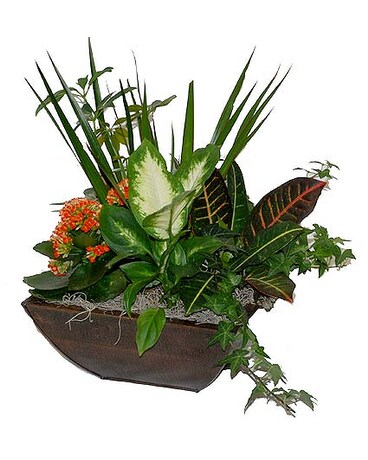Care of Plants Guide
Succulent Care
In addition to proper succulent soil and good watering practices, succulents require two more things to survive: sun and fertilizer.
Sun: Succulents require at least 6–8 hours of full sun a day.
Fertilizer: Give succulents fertilizer in spring. Use balanced fertilizer with equal proportions of nitrogen, phosphorous, and potassium.
Once established, most succulent plant care is minimal. But a few taller varieties, such as 'Autumn Joy', need to be trimmed back in the fall or early spring.
Hardy Succulents vs. Tropical Succulents
Gardening with Succulents
Succulents attract gardener types because of their quirky good looks and flexibility in the garden. Succulents woo decorator types because of their interesting shapes, colors, and textures. They are attractive to first-time gardeners, too, because they are so easy to care for and look great with very little attention.
Containers: Succulents can live happily in the a low bowl or pot. The only requirement is that there are drainage holes in the container so water can drain away from the roots of these plants. Pack a variety of succulents together to make a mosaic of color.
Indoors: Succulent care indoors is very low maintenance, but needs to be more regular. How to care for succulents indoors—place them in a place with bright, direct sunlight and only water them once their soil has dried out. Depending on the moisture and humidity in your home, that could be every week, every two weeks, or even just once a month. Monitor your plant's soil for the first few months to determine a watering schedule.
Tropical Plant Care
Tropical plants are those native to the world’s tropical regions, known for their ability to thrive in warm climates.
Caring for tropical plants involves creating conditions similar to their natural habitat. Here are some general tips for tropical plant care:
- Watering: Tropical plants prefer consistent moisture but do not like to be overly wet or bone dry. It is best to let the soil dry between waterings.
- Light: They need bright, indirect light. Direct sunlight may damage the leaves, hence it's crucial to position them in an area that replicates the filtered light found in a tropical forest. As for temperature, they flourish in warmth, with an ideal range of 65 to 85 degrees Fahrenheit.
- Humidity is vital for tropical plants, and it can be increased by misting them, placing them on a tray of pebbles and water, or using a humidifier. For soil, a well-draining potting mix that includes peat moss, perlite, and vermiculite is crucial. Fertilize tropical plants monthly with a specialized fertilizer during their growing season, and lessen fertilization in the winter months.
Remember, the specific care for each tropical plant may vary, so it’s always good to research the particular needs of the plant you have or are planning to get. Mixed planters delivered from your local florist may be overfilled for presentation and it may be beneficial to repot a plant or two as they grow to allow the other plants space to grow. When doing this remember to add a layer of stone, rock or sand to the base for extra drainage.
Poinsettia Care
Keep Soil moist: Water thoroughly when soil is dry to touch. Prefers bright diffused sunlight, do not expose to direct sun. Place in a moderate temperature location. Bright light and cool nights will help maintain brightly coloured brands. Set plant on a saucer or dish to protect furniture from water. Keep out of reach of children and pets (click here for more information Are Poinsettias Toxic For Pets?)
Looking for succulents and topicals? Visit our shop to see what our local growers have sent us this week at 437 Lyndoch Street, Corunna ON
www.lapiersflowers.com


